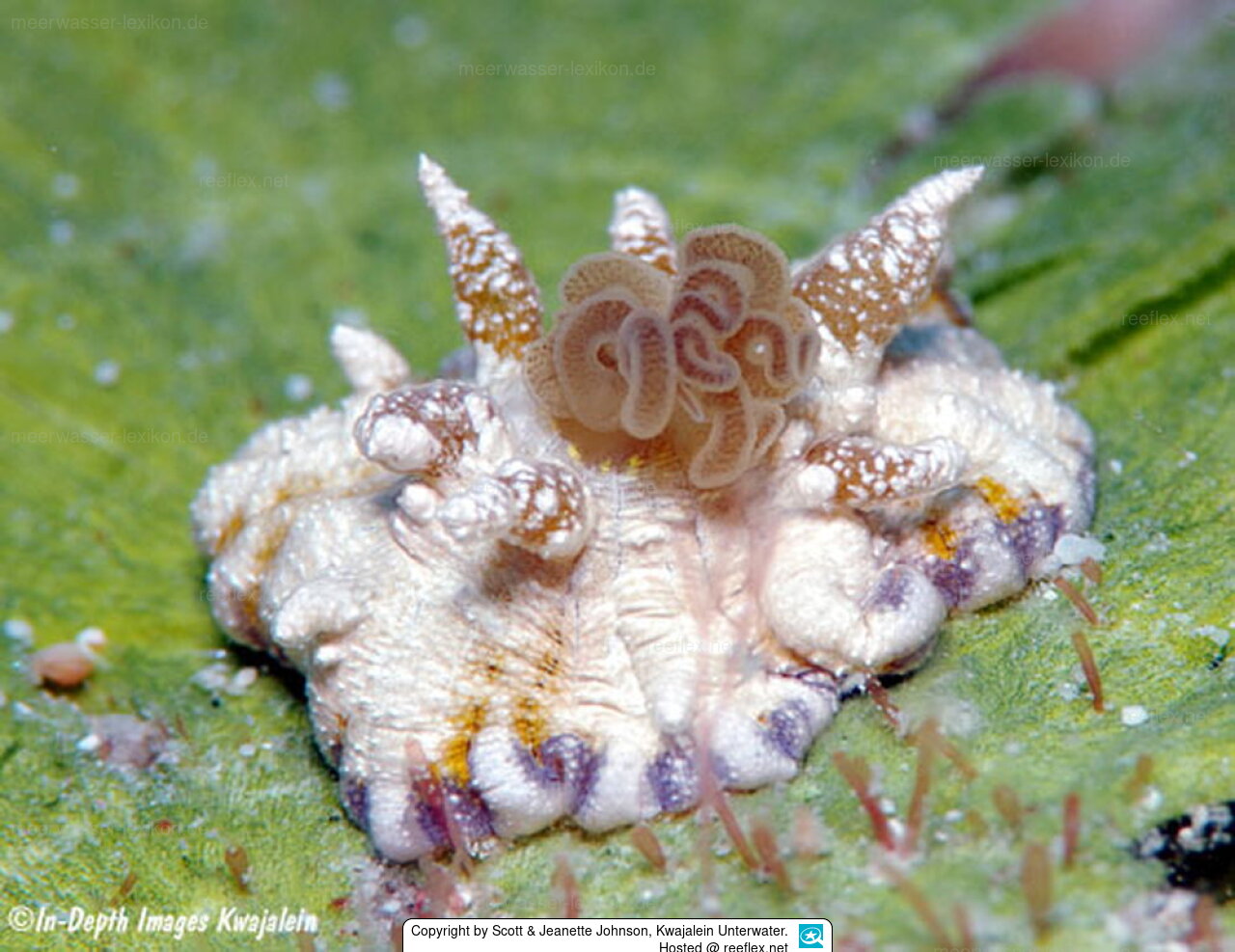Info
Bunodeopsis medusoides (Fowler, 1888)
The largest specimen of Bunodeopsis medusoides observed to date in a fully extended, live state had a length of 2cm, the diameter of the pedal disk was 1cm and the length of the longest tentacles was 1.5cm, a mini, or dwarf sea anemone.
Bunodeopsis medusoides settles on dead corals in reefs, in lagoons, in deep water passes.
In one particular case, the sea anemone was found near the inlet to a pump that had fed water into a cement tank on Coconut Island.
Bunodeopsis medusoides is capable of swimming freely in surface water.
Several types of clonal reproduction have been documented in tiny zooxanthellate sea anemones from the tropical Pacific.
All are Boloceroides, as indicated by the basal sphincter of the tentacles and the swimming behavior of the animals.
In one species, individual tentacles were pinched off at the sphincter, ejected into the coelenteron, and hatched while regenerating into tiny new polyps within ~4 days.
Within a day of release, the polyps were feeding on live prey and swimming, holding the tentacles in place.
A similar process occurs in another species studied, Bunodeopsis medusoides.
In a third species, a previously undescribed mode of reproduction was observed. These anemones bore a primary cycle of tentacles that were actively involved in feeding and swimming, were not shed, and showed no evidence of polyp formation.
Alternating with these tentacles were fan-like clusters of shorter tentacles that were relatively inactive during feeding and swimming.
Despite the sphincter at the base of each of these tentacular bundles, they were never shed individually; instead, each bundle separated as a unit, which then regenerated into a new polyp.
Two other types of reproduction were observed in similar, tiny boloceroid anemones collected together in the same habitat: longitudinal fission, not previously reported in boloceroidids, and pedal fission.
Predator: Baeolidia scottjohnsoni
Synonyms:
Alicia medusoides (Fowler, 1888)
Thaumactis medusioides
Thaumactis medusoides Fowler, 1888
The largest specimen of Bunodeopsis medusoides observed to date in a fully extended, live state had a length of 2cm, the diameter of the pedal disk was 1cm and the length of the longest tentacles was 1.5cm, a mini, or dwarf sea anemone.
Bunodeopsis medusoides settles on dead corals in reefs, in lagoons, in deep water passes.
In one particular case, the sea anemone was found near the inlet to a pump that had fed water into a cement tank on Coconut Island.
Bunodeopsis medusoides is capable of swimming freely in surface water.
Several types of clonal reproduction have been documented in tiny zooxanthellate sea anemones from the tropical Pacific.
All are Boloceroides, as indicated by the basal sphincter of the tentacles and the swimming behavior of the animals.
In one species, individual tentacles were pinched off at the sphincter, ejected into the coelenteron, and hatched while regenerating into tiny new polyps within ~4 days.
Within a day of release, the polyps were feeding on live prey and swimming, holding the tentacles in place.
A similar process occurs in another species studied, Bunodeopsis medusoides.
In a third species, a previously undescribed mode of reproduction was observed. These anemones bore a primary cycle of tentacles that were actively involved in feeding and swimming, were not shed, and showed no evidence of polyp formation.
Alternating with these tentacles were fan-like clusters of shorter tentacles that were relatively inactive during feeding and swimming.
Despite the sphincter at the base of each of these tentacular bundles, they were never shed individually; instead, each bundle separated as a unit, which then regenerated into a new polyp.
Two other types of reproduction were observed in similar, tiny boloceroid anemones collected together in the same habitat: longitudinal fission, not previously reported in boloceroidids, and pedal fission.
Predator: Baeolidia scottjohnsoni
Synonyms:
Alicia medusoides (Fowler, 1888)
Thaumactis medusioides
Thaumactis medusoides Fowler, 1888







 Scott & Jeanette Johnson, Kwajalein Unterwater
Scott & Jeanette Johnson, Kwajalein Unterwater








